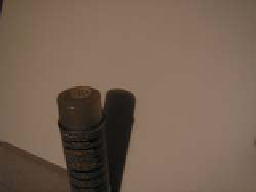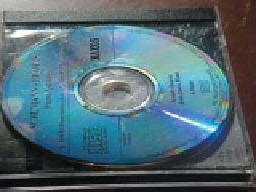Graphics Reference
In-Depth Information
and reached the eye. Conventional regular-expression notation is useful here, with
+
used to indicate “one or more,”
for “zero or more,” ? for “zero or one,” paren-
theses for grouping, and | for “or,” so that
L
(
D
∗
S
)
E
denotes a one-bounce path
from a source to the eye that involves either a diffuse or specular reflection, while
LD
+
E
is a path involving one or more diffuse bounces.
|
Inline Exercise 29.1:
(a) Write the notation for light that undergoes one
or more diffuse bounces, and then a final specular bounce before reaching
the eye.
(b) A very basic ray tracer might consider rays from the eye that undergo only
repeated specular bounces, followed by zero or one diffuse bounce, before
reaching the light. Write the notation for the path traveled by the light, from
luminaire to eye.
Note that the notation describes a sequence of scattering events,
not
just the
path. In the case of the half-mirror surface we just discussed, light could travel
from a luminaire to the surface, be mirror-reflected, and reach the eye; it could
also travel from the source, be
diffusely
scattered, and reach the eye. The light
energy in the two cases travels along the same path, but the first is described by
LSE
while the second is described by
LDE
.
There are extensions that are fairly common. Veach uses
D
to mean Lam-
bertian,
G
for any kind of glossy reflection,
S
for perfectly specular, and
T
for
transmission, for instance [Vea97].
We can use this notation to characterize certain rendering algorithms in terms
of the eye paths that they consider, following Hanrahan [JAF
+
01]:
• Appel's ray-casting algorithm:
E
(
D
G
)
L
• Recursive ray tracing (Whitted):
E
[
S
∗
](
D
|
Figure 29.6: A hard shadow.
|
G
)
L
• Path tracing (Kajiya):
E
[(
D
|
|
S
)
+
)
D
|
G
)]
L
G
• Radiosity:
ED
∗
L
Recursive ray tracing considers only light that's diffusely or glossily reflected,
and then mirror-reflected to the eye. Radiosity only handles diffuse reflections.
And Appel's ray-casting algorithm considers only direct lighting.
and Light Transport
We conclude this largely mathematical chapter with a discussion of things we
notice when we look at the world, for these phenomena—the things we take the
trouble to name—are the things we must render effectively if we want to make
compelling images. They thus serve as a guide to developing rendering algorithms.
Figure 29.7: A soft shadow.
The first phenomenon is the
shadow.
Figure 29.6 shows a hard shadow, created
by a luminaire (the sun) that subtends a very small solid angle. The light from the
sun is obstructed by the sharp edge of an object. Figure 29.7 shows a soft shadow.
Soft shadows can be caused by many things: If the shadowing object is not sharply
defined (e.g., a furry animal), the shadow may have no distinct edge, even if it's
cast by a point luminaire. If the shadow is cast by a very small object, diffraction
effects may dominate and effectively soften the shadow. But most often, soft shad-
owing is caused by nonpoint luminaires: A point on the receiving surface may be
Figure
29.8:
Diffraction
under
point lighting.









